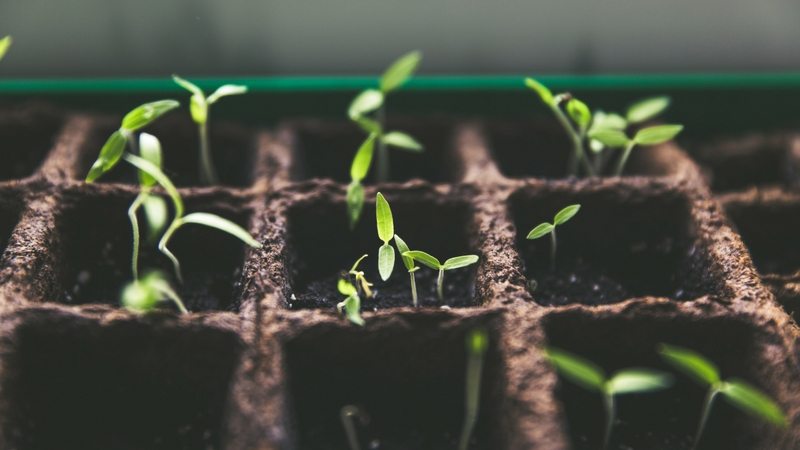Planting and Maintenance
Episode #5 of the course Small-scale gardening by Alice Morgan
Good morning! Now that we’ve got all the planning out of the way, let’s look at the “life cycle” of gardening. You’ll start with planting and move on to weeding, watering, mulching, and composting.
Planting
Planting is the first step for any garden and one of the most exciting! You have two options when planting your future produce: seeds and starts. If you want the experience of growing your garden from scratch, then I encourage you to purchase seeds and plant them yourselves.
To start seeds, you’ll need to plant them in trays in your house. Be sure to plant more seeds than you think you’ll need, in case they don’t all sprout. The new seedlings should be kept inside until the last frost passes and they can be transplanted. Make sure to keep them well watered after settling them in your garden, and be prepared to provide some initial shade.
You can also purchase already grown plants ready for transplanting. Called “starts,” these plants are commercially available from garden supply stores, local farms and farmers’ markets, greenhouses, and gardening clubs.
Mulching
Apply mulch to your garden as soon as you get your plants in the ground. Mulched soil holds more water, reducing the water needs of your seedlings. Perhaps most importantly, adding a layer of mulch around your seedlings will drastically cut down on the weeds in your garden bed. Fewer weeds means less competition for your plants and less work for you.
Good sources of mulch include grass clippings, shredded leaves, and straw, which eventually decompose into the soil. You can also use plastic garden sheeting or landscape fabric. Make sure that whatever material you choose is free of herbicides and pesticides, as these can leach into the soil and damage your plants.
Watering
After planting, watering your garden is the most important garden chore you’ll be performing. Without adequate watering, all your newly planted seedlings will dry out, wilt, and eventually die.
How much water a plant needs depends on the plant itself. Don’t worry too much about building the perfect watering schedule, because your garden will let you know when it needs water. The earth next to plants that need watering will be very dry to the touch and may have cracks along the surface. Plants that are very dry will also start to wilt.
When it’s time to pull out the watering can, focus on watering the plant’s roots and water deeply. Soak the soil until the earth is damp to the touch. Watering early in the morning will help prepare the plant for the midday sun.
Weeding
Weeding is another constant chore in gardening, particularly if you decide to dig an earthen bed into the ground. Fortunately, you can cut down on your weeding by planning. Mulching is your first line of defense. If your garden is particularly prone to weeds, try adding a layer of newspaper or cardboard over the weeds before you mulch. Without access to sunlight, the weeds will die and the paper will feed your soil. Another option is to preemptively plant a cover crop to keep weeds from ever getting established.
At the end of the day, the best thing to do is go out and pull the weeds up. If you start weeding early and re-weed often, your garden will stay in great shape. Make sure you pull out all of the weed’s root, which many of them need in order to regenerate.
Composting
Compost is a mixture of decomposed material that is high in organic material and nutrients and is the best fertilizer that money can buy (or not buy, if you DIY) for your plants. You want to apply compost once or twice a year: once in the fall, and again about two weeks before you plant to give your seeds and seedlings an extra boost. We’ll talk about composting in more detail in Lesson 8.
There are quite a few skills to learn when you start gardening, but soon the cycle of growing and caretaking will seem like second nature. I think you’ll find enjoyment in the simple acts of working with the land. Tomorrow, we’ll move on and talk about one of the ways to take some of the work out of gardening: companion planting.
Recommended reading
Share with friends

